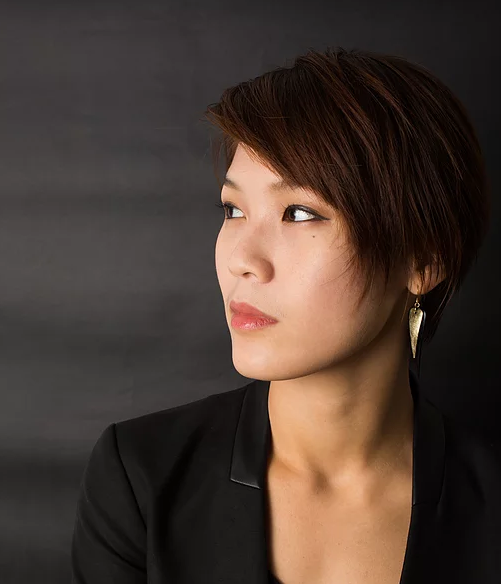PostClassical Ensemble concert floods National Cathedral in exotic sounds

Pianist Wan-Chi Su performed with PostClassical Ensemble Wednesday evening at Washington National Cathedral. Photo: Chih-Hao Su
Beginning with Claude Debussy, a number of Western composers became fascinated with the gamelan, the traditional ensemble of mostly percussion instruments from Indonesia. This story is often told in music history courses, but rarely is it explored at length in performance. The PostClassical Ensemble did just that in a sprawling mega-concert filling the nave of Washington National Cathedral on Wednesday night.
The event featured a Javanese gamelan and a Balinese gamelan sponsored by the Indonesian Embassy, along with traditional dancers, mostly heard during intermission and before and after the formal program. A representative from the embassy used the occasion to mark the 70th anniversary of modern diplomatic relations between the United States and Indonesia.
Along with most of Paris, Debussy heard the Sundanese version of the gamelan at the Exposition Universelle in 1889. As heard in the “Peacock Dance” that opened the concert, the Javanese version of the ensemble, similar to the Sundanese, has a delicate, dream-like timbre. Debussy was taken by its static melodic quality, the opposite of the harmonic progression of European tonality, referenced when he likened the gamelan’s sound to “the eternal rhythm of the sea, the wind in the leaves.”
Debussy attempted to capture something of that sound in “Pagodes,” the first movement from Estampes, a suite for piano. Taiwanese pianist Wan-Chi Su rendered the piece with just the delicacy and stasis called for in the score, marked at one point “almost without nuances.” From around the same time, Ravel’s “La vallée des cloches,” the last movement from Miroirs, sounded less gamelan-like in the hands of pianist Benjamin Pasternack.
Other than “Pagodes,” the other piece on the concert that best captured the static quality of the gamelan was Messiaen’s “Amen de la Création” from Visions de l’Amen. The two pianists made an excellent duo, with Pasternak forcefully hammering out the composer’s Creation theme in the lower and middle registers, stated several times in growing intensity. Su laid over top of that the fragile tolling of bells, in a repeated mi-re-do pattern (like the first three notes of “Three Blind Mice”) but obscured with tritones and dissonant sevenths.
The duo also played magnificently in the first movement of Poulenc’s Sonata for Two Pianos, especially savvy and smoky in touch from the refined Wan-Chi Su. The jazz-inspired harmony, propelled by the sense of tonal progression, owed less to the inspiration of the gamelan.
It was most striking in the resonant acoustic of the cathedral to experience the very different sound of the Balinese gamelan, more clangorous and wild. This was the type of ensemble studied by Canadian composer Colin McPhee during his stay in Bali in the 1930s. Two movements from his Balinese Ceremonial Music, again for two pianos, revealed his refraction of the gamelan sound through Western ears. Su’s delicate approach on the repeated patterns in the right hand of the top part missed most of the loudness of the Balinese sound.
The repetition of Indonesian and other world music had a profound effect on minimalist composers like Terry Riley and Steve Reich. Echoes of that interaction were heard in the more recent Black Toccata by Bill Alves, mixing repeated patterns with syncopated riffs, all on the black keys of both pianos.
Two absorbing pieces by American master Lou Harrison filled the second half. Violinist Netanel Draiblate, concertmaster of PCE, alternated with Su’s piano in the solos of the composer’s Suite for Violin, Piano, and Small Orchestra. Composed in 1951, before Harrison’s stay on Java in the 1980s, the work captures some of the delicate gamelan sounds by mixing flute, harp, and the percussive clatter of a piano prepared with tacks on its felt hammers. Conductor Angel Gil-Ordóñez held both of the Harrison pieces together with confident gestures.
Harrison’s Concerto for Piano and Orchestra, composed in 1985, was a tour de force in the hands of Benjamin Pasternack, especially in the wild tumult of the “Stampede” movement. Clusters produced by a wooden bar placed on the keyboard were shadowed deftly by thwacks of percussion. The piece’s slow movement, with dreamy piano haloed by sighing strings, relied too much on triadic harmony to sound much like the gamelan, but the sense of time suspended as the music gently unfolded brought Debussy’s famous description of Indonesian music back to mind.

Posted Dec 25, 2019 at 8:20 am by Claudia Shuster
I have had the special pleasure of hearing delicate, sensitive performances by pianist Wan-Chi Su on several occasions and only wish I could have attended the concert described above! What a delicious treat for the audience members!